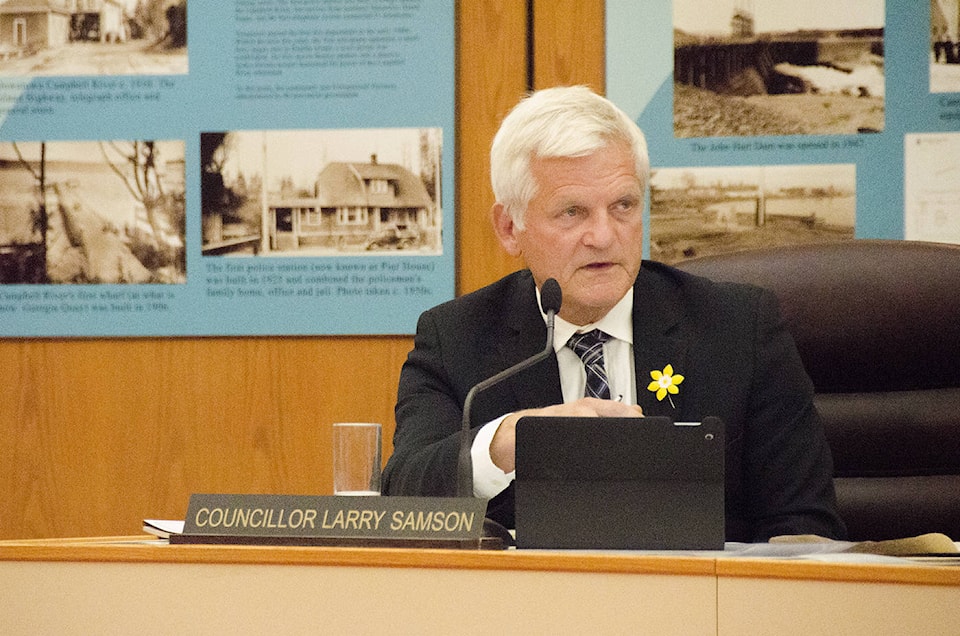The City of Campbell River will spend just over $500,000 on a study into the impact of sea level rise on our community.
Thanks to $325,000 in grants, however, the local taxpayer is only on the hook for $180,000 of that money – which was already set aside for just this purpose during financial deliberations in December.
The city recently received grant funding from the Federation of Canadian Municipalities ($175,000) and the Union of BC Municipalities ($150,000) to complement the money they had set aside for the study, meaning they can now create a much more detailed picture of what the future of our shoreline will look like due to rising water levels.
But while awarding the RFP for the study during last week’s council meeting, some councilors expressed concern about how the money was proposed to be awarded.
The city was looking for someone to do $205,000 worth of work on the study during the first phase, but staff was recommending accepting the bid of Northwest Hydraulic, which was only $176,200.
“Given that the preferred proposal has a budget of $176,200, staff is recommending that the full $205,000 is authorized to be spent such that staff are able to select additional ‘add-on’ options outlined in the proposal, up to $28,800 in value, or request additional work from the proponent as required,” the report says.
When questioned by Coun. Larry Samson on why they would still supply staff with the full amount when the successful bid was much lower, long range planning and sustainability manager Amber Zirnhelt said that because this is something that has never been undertaken before in our region, they don’t know what kind of hurdles are going to be in the way during the study.
“The best way to describe it is that staff are looking to have a contingency with this project,” Zirnhelt said. “The full $205,000 would allow us to have about a 15 per cent contingency on the project which would allow us to undertake additional work if required.”
In particular, Zirnhelt said, staff are concerned about the Painter/Barclay area, where the study will likely be much more difficult due to the topography of the shoreline.
“If the initial assessment indicates that we would benefit from doing more detailed work, such as drilling bore holes, then this contingency would allow us to undertake that work if it’s deemed important,” Zirnhelt said, adding that extra money available will also allow them to “make better visualization tools available” in their 3D mapping throughout the study, should they choose.
Samson also wondered whether they needed to put any money into the project at all now that they had $325,000 in grants.
“Is that grant money dependent on our contribution?” Samson asked.
Zirnhelt then clarified that, yes, the grant funding itself was based on a project total of $505,000.
“If we under-spend on our total project budget, then the grant money would be reduced accordingly, based on our contribution amount. Essentially, we were able to use the money the city had committed to leverage additional grant funding, and part of the reason we’re looking for approval to use the full $205,000 (for phase one) is because we now have a broader scope of work we need to complete under the grant funding, so this is a good opportunity to be able to do that and have the contingency built in to have the detail in the studies that we need.”
That was enough to placate Samson’s concerns.
“I think it’s important that if we do see problems or if something comes up, that we have that available contingency so that staff doesn’t have to come back to council and say, ‘guess what? We need more money,’ so I do support this motion.”
But Mayor Andy Adams still didn’t like it.
“I guess when I see funds that are just, ‘we’ll use it for contingency,’ or, ‘we’ll do some add-ons,’ it feels kind of ‘make-it-up-as-we-go,’ and that’s not consistent with how we do financial planning,” Adams said. “I would like to see, when funds like that are identified that they are held back or put into another fund that can then be addressed by council. I’m not comfortable with how this has been presented.”
City Manager Deborah Sargent acknowledged the confusion and agreed that “in future reports we will provide additional clarification in terms of what the contingency involves and provide a menu of options for council to choose from,” which allayed council’s concerns, and they passed the motion, with only Adams opposed.
